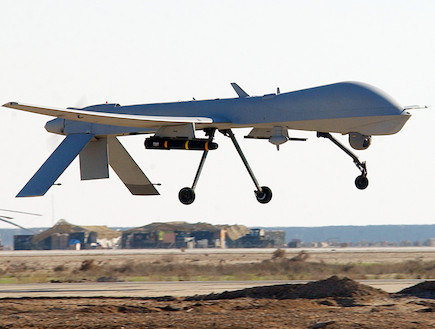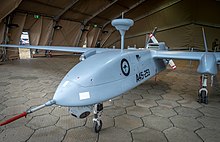ISRAEL IS THE BIGGUEST EXPORTERS OF DRONES
IN THE WORLD .
THE NUMBER 1 DRONE MANUFACTURER OF SMART DRONES
USA EUROPE JAPAN RUSSIA INDIA KOREA GERMANY BRITAIN AND MOST OF THE COUNTRIES IN ISRAEL IN THE WORLD BUY DRONES
TODAY ISRAEL HAVE 10000 DIFFERANT DRONES
People & Power investigates how Israeli drone technology came to be used by the US and its allies in Afghanistan and elsewhere.
ALL THE DRONES OF THE USA ARE BASED ON ISRAELI TECHNOLOGIES
ALL THE DRONES IN THE WORLD TODAY ARE BASED ON ISRAELI TECHNOLOGIES PATENTED .
THE MISSILES FOR THE DRONES THEY ARE ALL ISRAELI
THE USA MISSILE FOR DRONES ARE ALSO BASED ON ISRAELI MISSILE
THE RADAR FOR ALL THE DRONES IN THE WORLD ARE MAED BY ELTA COMPANY FROM ISRAEL
THE BEST DRON IN THE WORLD IS THE ISRAELI EITAIN





ISRAEL SELL EVERY YEAR 12 BILLIONS USD OF DRONES
INDIA BOUGHT DRONES FOR 1 BILLION USD
THE USA BUY EVERY YEAR 1 BILLION OF US OF ISRAELI SUPER DRONES
BRASIL BUY 500 MILLION OF DRONES FROM ISRAEL EVERY YEAR
SAUDIA QUATAR BAHRAIN AND ALMOST OF THE ARABE COUNTRIES BUY DRONES FROM ISRAEL.
Top 10 Deadly Military Drones in The World | 2017 HD
MQ-9 REAPER
IAI EITAN ISRAEL
PREDATOR C, AVENGER
X-45 UCAV
X-47B PEGASUS
hermes ISRAEL
WING LONG II UAV
BAE TARANIS
ELBIT HERMES 900 ISRAEL
NORTHROP GRUMMAN RQ-4 GLOBAL HAWK
GRAY EAGLE UAS
HOW ISRAEL SOLD RUSSIA DRONES TO STOP MISSILES FROM REACHING IRAN
http://www.jpost.com/Magazine/Books-Israel-and-the-saleof-advanced-drones-to-Russia-480326
http://www.mako.co.il/pzm-magazine/Article-a973e766b085e21006.htm
The IAI Heron (Machatz-1) is a medium-altitude long-enduranceunmanned aerial vehicle (UAV) developed by the Malat (UAV) division ofIsrael Aerospace Industries. It is capable of Medium Altitude Long Endurance (MALE) operations of up to 52 hours' duration at up to 10.5 km (35,000 ft). It has demonstrated 52 hours of continuous flight, but the effective operational maximal flight duration is less, according to payload and flight profile. There is a new version, Heron TP, also known as IAI Eitan.
On 11 September 2005, it was announced that the Israel Defense Forces purchased US$50 million worth of Heron systems.[2]
Heron navigates using an internal GPS navigation device, and either a pre-programmed flight profile (in which case the system is fully autonomous from takeoff to landing), manual override from a ground control station, or a combination of both. It can autonomously return to base and land in case of lost communication with the ground station. The system has fully automatic launch and recovery (ALR) and all-weather capabilities.
Heron can carry an array of sensors, including thermographic camera (infrared) and visible-light airborne ground surveillance, intelligence systems (COMINT and ELINT) and various radar systems, totaling up to 250 kg (550 lb). Heron is also capable oftarget acquisition and artillery adjustment.
The payload sensors communicate with the ground control station in real time, using either direct line of sight data link, or via an airborne/satellite relay. Like the navigation system, the payload can also be used in either a fully pre-programmed autonomous mode, or manual real-time remote operation, or a combination of both.
Super Heron[edit]
At the Singapore Air Show in February 2014, IAI unveiled the Super Heronrefinement of the Heron UAS. The Super Heron has a heavy fuel 200 horsepower engine that increases its rate of climb and performance. Its range is 250 km (160 mi) line-of-sight and 1,000 km (620 mi) by satellite control. Endurance is 45 hours at a maximum altitude of 30,000 ft (9,100 m). Cruising speed is 60 to 80 kn (110 to 150 km/h; 69 to 92 mph) and top speed over 150 kn (280 km/h; 170 mph).[3]Operational history[edit]
The Heron saw significant use during Operation Cast Lead in Gaza of 2008–2009. During the deployment, each brigade combat team was assigned a UAV squadron for close support. This was the first Israeli operation in which UAVs, helicopters, and fighter jets were allocated to ground forces directly without IAF central command authorizing sorties. Air-support controller teams operated alongside brigade commanders at the front emphasizing the brigade commander's utilization of direct air assets.[4] A high degree of situational awareness was achieved by maintaining at least a dozen UAVs in flight over Gaza at all times. Aerial surveillance was provided by Heron and Hermes 450 UAVs and Apache attack helicopters. Along with coordination between the Air Force and ground troops, Israel ground forces were able to utilize cooperation with the Israel Security Agency by having operatives attached to the forward units. This inter-service coordination allowed for a higher level of tactical awareness and the ability to strike time-critical targets.[5]Other countries operating the Heron include Singapore, India and Turkey.[6] France operates a derivative of Heron namedEagle or Harfang.[7] In 2008, Canada announced a plan to lease a Heron for use in Afghanistan, starting in 2009.[8] As of mid-2009, Australia leased two Herons as part of a multimillion-dollar lease to operate the vehicles in Afghanistan.[9] In early July 2013, the Heron reached 15,000 flight hours over Afghanistan.[10] Australia concluded its use of the Heron in support ofOperation Slipper in Afghanistan on 30 November 2014, after it had accumulated 27,000 flight hours.[11]
Heron variants[edit]
- Turkey operates a special variant of the Heron, which utilizes Turkish-designed and manufactured electro-optical subsystems. For example, the Turkish Herons use the ASELFLIR-300T airborne thermal Imaging and targeting system designed and manufactured by ASELSAN of Turkey. The Turkish Herons also have stronger engines in order to compensate for the added payload created by the heavier ASELFLIR-300T. This is the same FLIR system currently used in the TAI/AgustaWestland T-129 attack helicopter[12] and also the TAI Anka MALE UAV. IAI staff maintain that the Turkish Heron's "with its enhanced performance, is better than all existing Heron UAVs operating worldwide”.[13] Turkish Aerospace Industries (TUSAŞ) provides maintenance and overhaul services for its Herons.[14]
- EADS Harfang - variant operated by France
[th]Role[/th] Unmanned aerial vehicle [th]National origin[/th] Israel [th]Manufacturer[/th] Israel Aerospace Industries [th]First flight[/th] 1994 [th]Primary users[/th] Israeli Defence Force
Indian Air Force
Brazilian Federal Police
Turkish Air Force[th]Unit cost[/th] $10M[1] [th]Variants[/th] EADS Harfang
IAI Eitan
Caçador


Operatorst]
 Azerbaijan
Azerbaijan- Azerbaijani Air Forces - five[15]
 Australia
Australia Brazil
Brazil Canada
Canada- Royal Canadian Air Force – formerly operated three;[19] two + still in operation, the rest ceased operation in 2011
 Ecuador
Ecuador- Ecuadorian Navy – two[20]
 Germany
Germany- German Air Force – three plus two ground stations on an initial one-year lease starting in 2010[21][22]
 India
India Israel
Israel- Israeli Defence Force – one +[26]
 Morocco
Morocco- Royal Moroccan Air Force – three [27]
 Singapore[28][29]
Singapore[28][29] Republic of Korea
Republic of Korea- Republic of Korea Army – three on order[30]
 Turkey
Turkey- Turkish Air Force – ten
 United States
United States- United States Navy – two[31]
General characteristics
- Crew: two on ground
- Length: 8.5 m (27 ft 10 in)
- Wingspan: 16.60 m (54 ft 5 in)
- Height: ()
- Max. takeoff weight: 1,150 kg (2,530 lb)
- Powerplant: 1 × Rotax 914, 86 kW (115 hp)
Performance
- Maximum speed: 207 km/h (113 knots, 130 mph)
- Range: 350 km (189 nm, 217 mi)
- Service ceiling: 10,000 m (32,800 ft)
- Rate of climb: 150 m/min (492 ft/min)
- Wing loading: 89 kg/m² (18.2 lb/ft²)
- Endurance: 52 hours[32]
- Payload: 250 kg (550 lb)

 אינדקס
אינדקס






